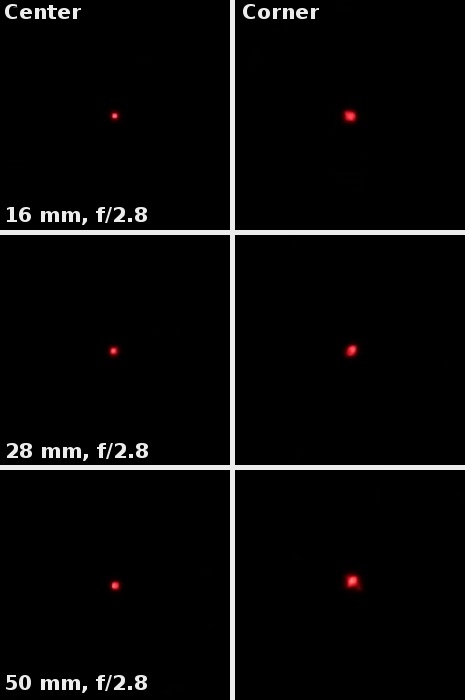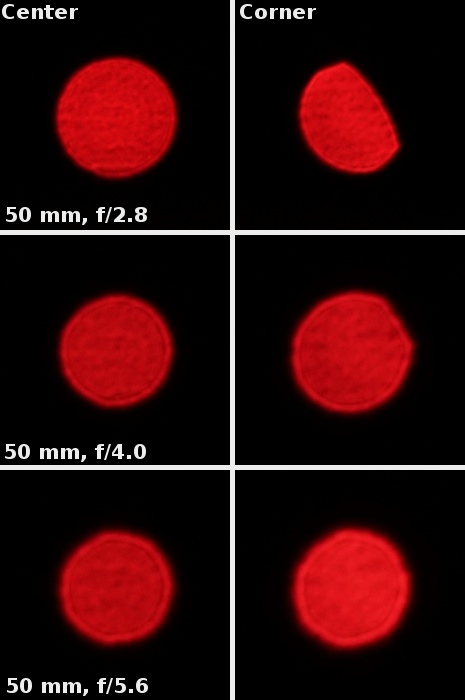Sony DT 16-50 mm f/2.8 SSM
7. Coma, astigmatism and bokeh

When it comes to the astigmatism it is corrected better than the coma. The average difference between horizontal and vertical MTF50 function values amounted to just 3.3% which is very good, praiseworthy result.
Please Support UsIf you enjoy our reviews and articles, and you want us to continue our work please, support our website by donating through PayPal. The funds are going to be used for paying our editorial team, renting servers, and equipping our testing studio; only that way we will be able to continue providing you interesting content for free. |
- - - - - - - - - - - - - - - - - - - - - - - - - - - - - - - - - - - - - - - - - - - - - - - -
The crops below show defocused diode images taken from the centre and the corner of the frame. It is clear that the light in the circle is more or less evenly spread and only on the very edge there is a distinct rim. What’s interesting, when you pass to the other side of the focus that rim gets significantly less intensive. You can expect that the blur before the object itself will look better than that from the background behind the object you set the focus on.







